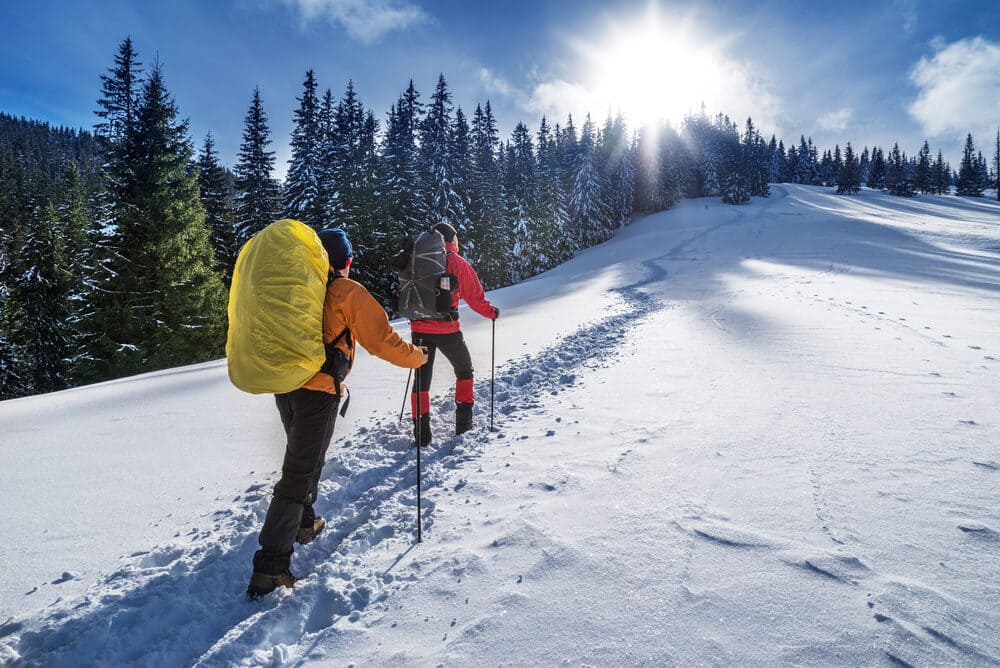
Hiking season doesn’t have to end when winter comes. With the right clothing, the proper gear, and a bit of knowledge, you can enjoy the great outdoors all year round. One thing to keep in mind though, if you are planning a trip during the winter months, it’s important to be extra-prepared. Knowing what to do in emergency situations as well as learning a few basic winter survival skills can boost your confidence and ultimately save your life. A wilderness first responder course can be beneficial to fully prepare you for any emergency situations you may experience in the wild.
First and foremost, the number one rule of cold weather hiking is to keep warm and dry. This means knowing the basics of layering and having the appropriate clothing as well as how to build a fire in the snow and create an emergency shelter. Below we’ll go over the ins and outs of winter survival so you can be prepared for any snowy situation.
Pack Your Gear
While there are basic essentials you should always pack in your gear for any expedition, there are a few weather specific items you should bring when hiking in the winter or colder climates.
Make a Fire
If you’re hiking in the winter, building a fire is essential for staying warm, but it will also help you cook and boil water or snow for drinking. In your gear it’s vital to pack at least one, preferably two or more options of fire starters such as waterproof matches, a lighter, and/or flint.
When making a fire in cold and wet conditions, it’s important to know which tinders can burn when wet. Birch bark and sap from pines and spruces are great forms of tinder if you’re unable to find dry foliage. You can also use paper or anything else you have brought with you that will burn.
To build the fire, you’ll want to find an area with no snow or if necessary, you may have to remove the snow by digging a shallow pit. If the ground is frozen over create a platform of rocks or wood as your base for the fire. You can then stack rocks around the fire pit to help block the wind.
Building a Shelter
If you unexpectedly have to spend the night outside in the winter, it will be essential to create shelter to stay warm, protect yourself from the harsh elements, and prevent hypothermia. If you don’t have a tent, a tree well, snow trench, or snow cave are all fairly simple emergency winter wilderness shelters you can make to protect yourself. Walls of snow are also great wind-blockers in stormy conditions.
Staying Hydrated
When it comes to survival, water is your number one priority. While you can survive up to three weeks without food, its only roughly three days without water. The good news is that if you happen to become stranded in snowy conditions, you’re surrounded by a usable water source. However, it’s imperative to heat it first over the fire. Not only will boiling water remove any pathogens but warm water is much easier for your body to digest helping you to conserve energy.
Staying Fueled
If you’ve run out of packed food, while definitely more difficult than in warmer seasons, there are edible roots and plants you may be able to forage in the winter. These include:
Staying Dry and Warm
When hiking in winter, the most important rule is to stay dry and warm. The right layering system can help you maintain the correct body temperature without overheating. Your layers should consist of a base layer, mid layer, and an outer layer. You should also bring extra clothes along in case any articles of clothing get wet. Wearing wet clothes in cold weather can be dangerous. You can dry any damp clothing in front of the fire overnight or hang in the sun. At night, it may also be helpful to share body heat with your travel companion by cuddling up close to keep warm.